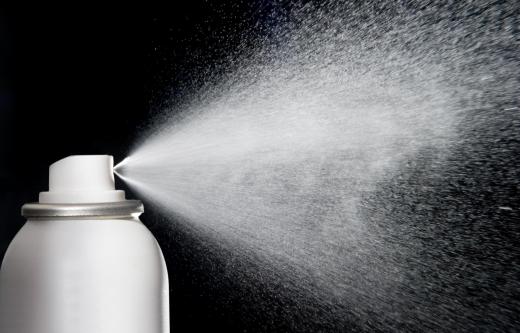What is Nitrous Oxide?
 Malcolm Tatum
Malcolm Tatum
Popularly known as laughing gas, nitrous oxide is a gas that is non-flammable and colorless. One of the most common uses is in the field of dentistry, where the gas is administered to the patient as part of the preparation process for a dental procedure. However, nitrous oxide can also be used in several other applications that are not connected with dentistry.
One of the other uses for nitrous oxide has to do with rocketry. The gas functions as an oxidizing agent in the motor of the rocket, and is sometimes used in hybrid systems that pair the nitrous oxide with some other form of propellant. As a bonus, nitrous oxide can be broken down and used to create breathable air in an emergency situation.

Along with rocket motors, nitrous oxide can also be used in different designs of an internal combustion engine. This application is not unusual with vehicles that are designed for racing purposes. In some engines, the gas serves as an agent that allows the engine to more efficiently use the fuel and air combination to create higher levels of combustion. This in turn allows the vehicle to move at a more rapid pace. A slightly different approach is known as NOS or Nitrous Oxide Systems which also helps to boost the power of the engine to use propellants to best advantage.

Nitrous oxide can also be utilized as a propellant in aerosol products. Many common food products such as cooking sprays and cans of whipping cream use the gas as the propellant of choice. The advantage is that nitrous oxide does not tend to break down the butterfat in the cream or cause the oils in the cooking sprays to go rancid in a short time. This gives the gas a decided advantage over other compressed air formulas that would not allow the cream to produce the foamy effect desired and would not allow the cooking spray to keep at room temperature.

The application of nitrous oxide that most people are familiar with is found in the dentist’s office. Administered through a mask that is placed over the mouth and nose, the gas helps to relax the patient, making the administration of a shot of novocaine much less painful. The patient also tends to become so relaxed that the passage of time becomes difficult to track, a trait that can be beneficial when the dental work involved is somewhat time consuming. While most people do not experience any side effects from the administration of the gas, there are some incidences of light nausea and similar physical effects that last for a short time.

Unfortunately, the gas is also sometimes abused as a recreational drug. While perfectly safe when administered in a controlled environment, the gas can cause a number of conditions such as a sense of depersonalization that is not unlike having an anxiety attack, dizziness, and a general sense of disconnection with the surroundings. In some cases, the gas may cause hallucinations as well as producing a feeling of euphoria. The gas is sometimes mixed with amyl nitrite in what is known as nitrous kits as a way of producing a quick effect that is not unlike the effect produced after drinking several alcoholic beverages.
AS FEATURED ON:
AS FEATURED ON:
















Discussion Comments
@ Water Serpent
The article talks about people using it as a recreational drug, I wonder if there have ever been overdoses associated with its use?
My daughter is 5, and I've read that there are some rare but life threatening side effects of nitrous oxide. Two weeks ago, I read about a child that had asthma dying from a basic dental procedure, because the dentist wasn't aware of the condition. Even if it's rare, that is definitely something parents should consider.
Post your comments